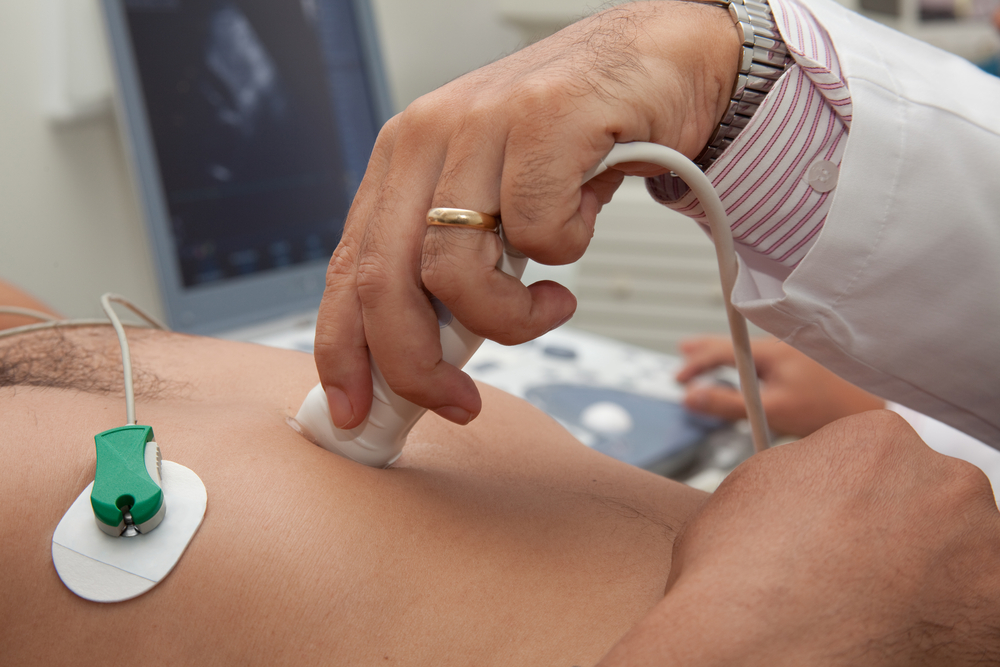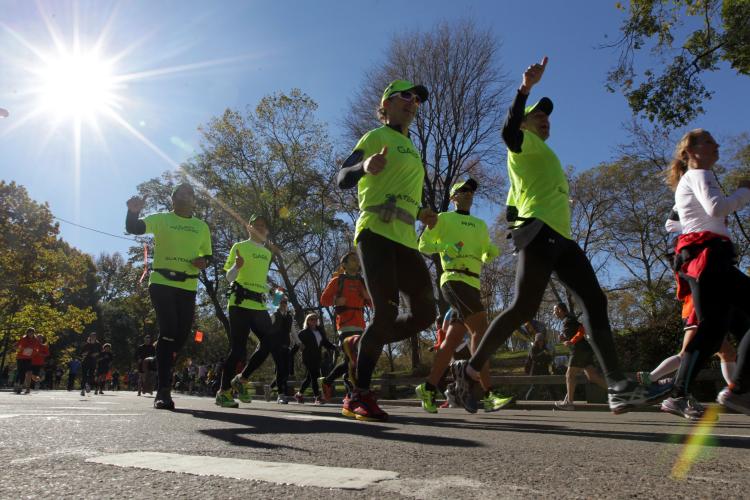With the Standard Chartered Singapore Marathon (SCSM) round the corner, a series of talks were held at the Marina Bay Sands Convention Centre to gear runners up for the race.
Dr Colin Koh, Medical Manager at the AsiaMedic Wellness Assessment Centre, talked about heart health and cardiac arrest.

Running is beneficial for heart health.
Running is beneficial to health and a key to longevity
Said Dr Koh, “Many times, we see sudden deaths from runners taking place and you ask, is it safe? A recent study this year from the United States (Running as a Key Lifestyle Medicine for Longevity. Progress in Cardiovascular Diseases, March 2017.) shows that running is a key lifestyle medicine for longevity and that it is beneficial for the overall health.”
The study followed 55,000 people for over 15 years, and found that running was associated with a 45% reduced risk of death from heart attacks and strokes, and a 30% reduced risk of death from anything.
Added Dr Koh, “Running as an impact sport, also has benefits for Asian women who are otherwise rather light in bone mass and prone to osteoporosis, which causes excess loss of bone mass, resulting in fragile bones.” This condition occurs commonly in post-menstrual women.
Something may be amiss with the underlying pathology of the heart
However while running is good and beneficial, Dr Koh added that cardiac arrest in running can occur because there is something amiss with the underlying pathology of the heart before and during the run.

Dr. Colin Koh.
He said, “So the idea is, how can we identify those at risk?”
Dr Koh then took us on a biology lesson and brought us through the basic structure of the heart, explaining how it pumps blood around the body.
He then added, “The most common cause of sudden death is coronary heart disease. This is when the arteries narrow with cholesterol deposits which results in insufficient blood flow.”
This issue often plagues athletes aged 40 years or older.
In younger athletes though, a common cause of cardiac arrest is anomalous coronary artery, which is a coronary artery that has an abnormality or malformation. The malformation is congenital (present at birth) and is most often related to the origin or location of the coronary artery.
Screening for defects is important
Such issues, Dr Koh pointed out, is the reason why screening for such defects is so important before a person chooses to undertake strenuous activity such as marathon running.
To screen a person, Dr Koh explained that they would first look at the history of the person, for example, whether they have had any fainting spells, heart palpitations and chest pains, or else whether they have a family history of heart problems. This means that if someone close to you, such as a parent, child or sibling has been diagnosed with or passed away from heart issues, then that needs to be checked out too.
Cardiac Tests
Cardiac tests such as the treadmill stress test, echocardiogram and heart CT scan can also be used to determine cardiac issues, but these have varying levels of accuracy.
Echocardiogram

A patient does an echocardiogram.
The echocardiogram is one of the tests that are used to determine the health level of the heart. It uses ultrasound to evaluate your heart muscle and heart valves.
Explained the doctor, “The ultrasound is done in real time and it can detect soft tissues. It can see whether the heart has enlarged thickened muscles or whether it is over-dilated and floppy. It can also see if the heart can pump blood or whether there is scarring.”
Dr Koh added, “The Echocardiogram is good in terms of telling how heart healthy you are, but it is limited because it gives information of the heart during rest only.”
Treadmill Stress Test
On the other hand, a treadmill stress test lets your doctor know how your heart responds to being pushed. You’ll walk on a treadmill or pedal a stationary bike. It is supposed to get more difficult as you go.
Said the Medical Manager, “Most doctors look at the treadmill test and use that to find or detect a blockage.”
He continued, “This test is cheap and good and we use it to gauge your fitness level and how your heart responds to exercise in particular.”
But he pointed out too that the treadmill stress test is not fully reliable in terms of detecting blockages. This is because it can only detect major blockages and not minor ones.
Heart CT Scan
Another test to determine whether there may be blockage is the heart CT scan. This is used to view your heart and blood vessels. It can diagnose birth defects, buildup of plaque that may be blocking arteries.
Said Dr Koh, “If you have cholesterol deposits in the heart arteries, these will show up as bright spots in the scan if they have been calcified. If something gets picked up, it is a certainty that the person has coronary artery disease. But it too, detects significant blockages only.”
Listen to your body at all times
Dr Koh pointed out however that even if you pass the screenings and are declared as medically fit to run, only you know your own body the best. This means that you need to listen to your body at all times and even if you are well trained, things can still happen.
Do not run if you have fever or flu

Do not run if you have a fever.
Also he added that if you have flu or fever, then you must recognise that this can have an impact on your heart. This is called viral myocarditis.
Said the doctor, “Sometimes a viral infection can affect the heart muscles. This sets off an autoimmune response that can affect muscles resulting in them weakening, causing them to dilate – this is also a reason why a seemingly well person collapses for no reason. So if you are quite sick and feel as though you are not in the right condition to run, see a doctor or forego running the marathon.”
Athlete’s Heart
Dr Koh also explained that there is a phenomenon known as ‘athletes heart’ which is a non-pathological condition commonly seen in sports medicine, in which the human heart is enlarged, and the resting heart rate is lower than normal.
Said the Medical Manager, “The reason is that the heart is so well conditioned that it can pump blood out with not much effort.”
As the name suggest, this affects people who do an average of more than three hours of exercise per week according to Dr Koh and profound cardiac remodelling is relevant to endurance athletes who do more than 15-40 hours of training per week, that typically refers to ultra runners and Ironman athletes.

Athlete’s heart can affect those who do more than 15-40 hours of training per week.
This is generally due to a remodelling and adaptation of the heart as a result of the exercise and physical activity. But this condition is not dangerous though.
And according to the doctor, when you stop exercising though, the heart goes back to normal in younger athletes, but Dr Koh added that we can not be sure whether the condition will regress or not in older athletes.

Leave a Comment